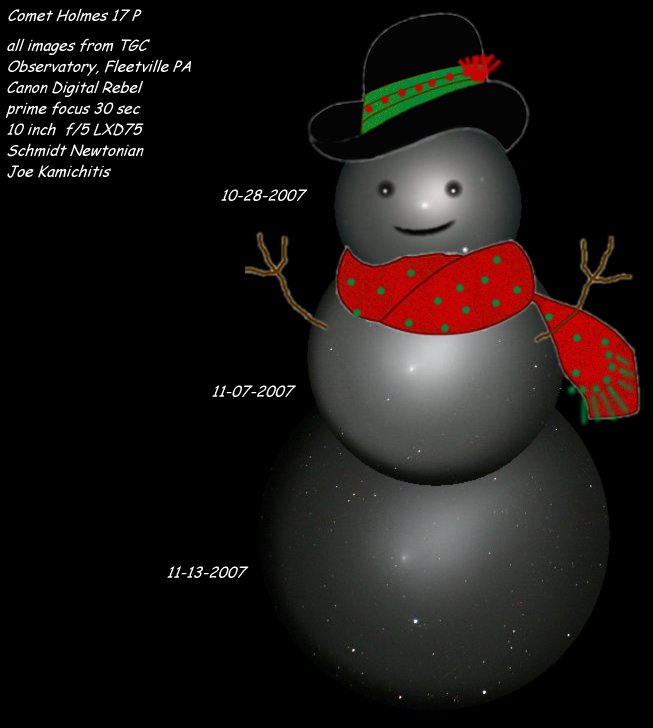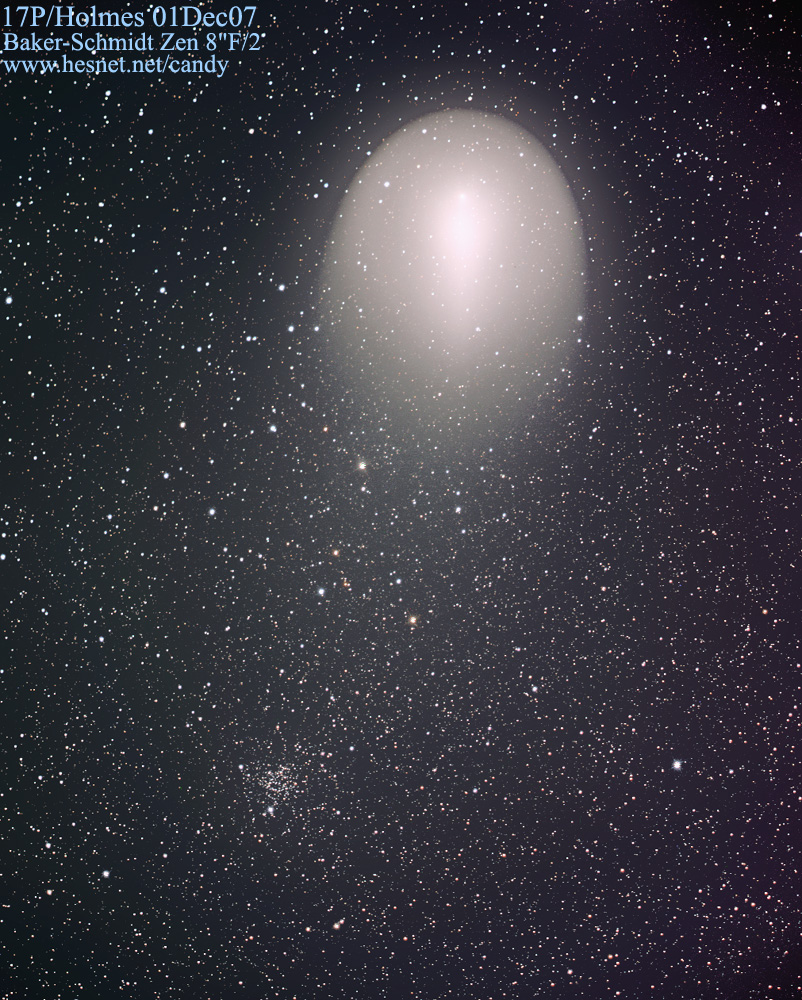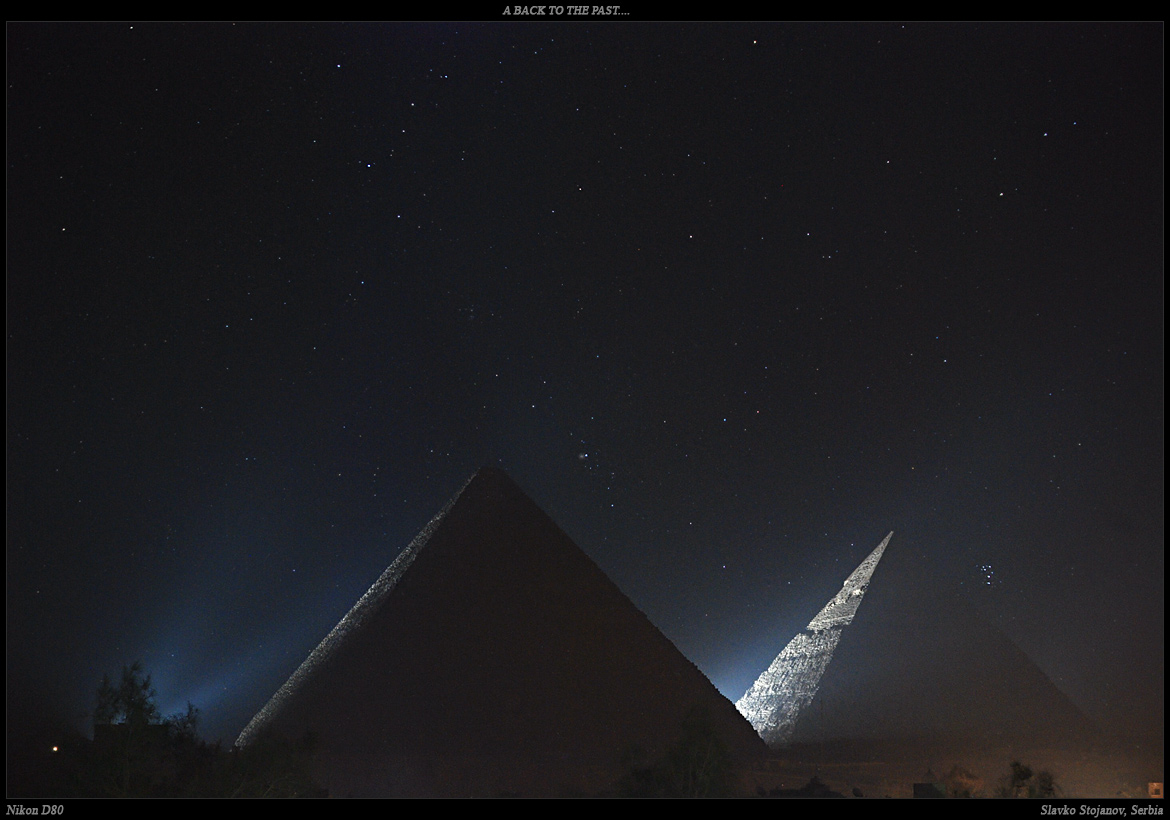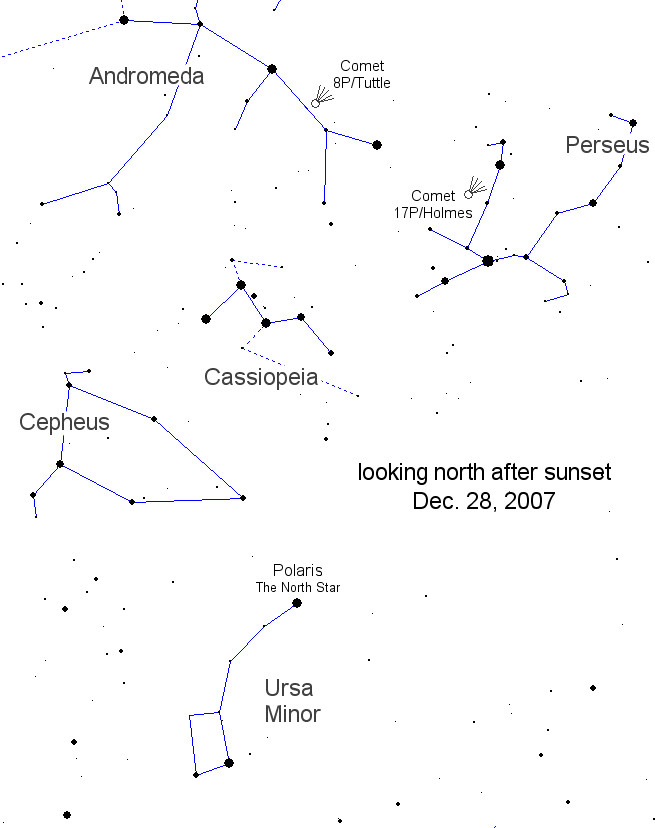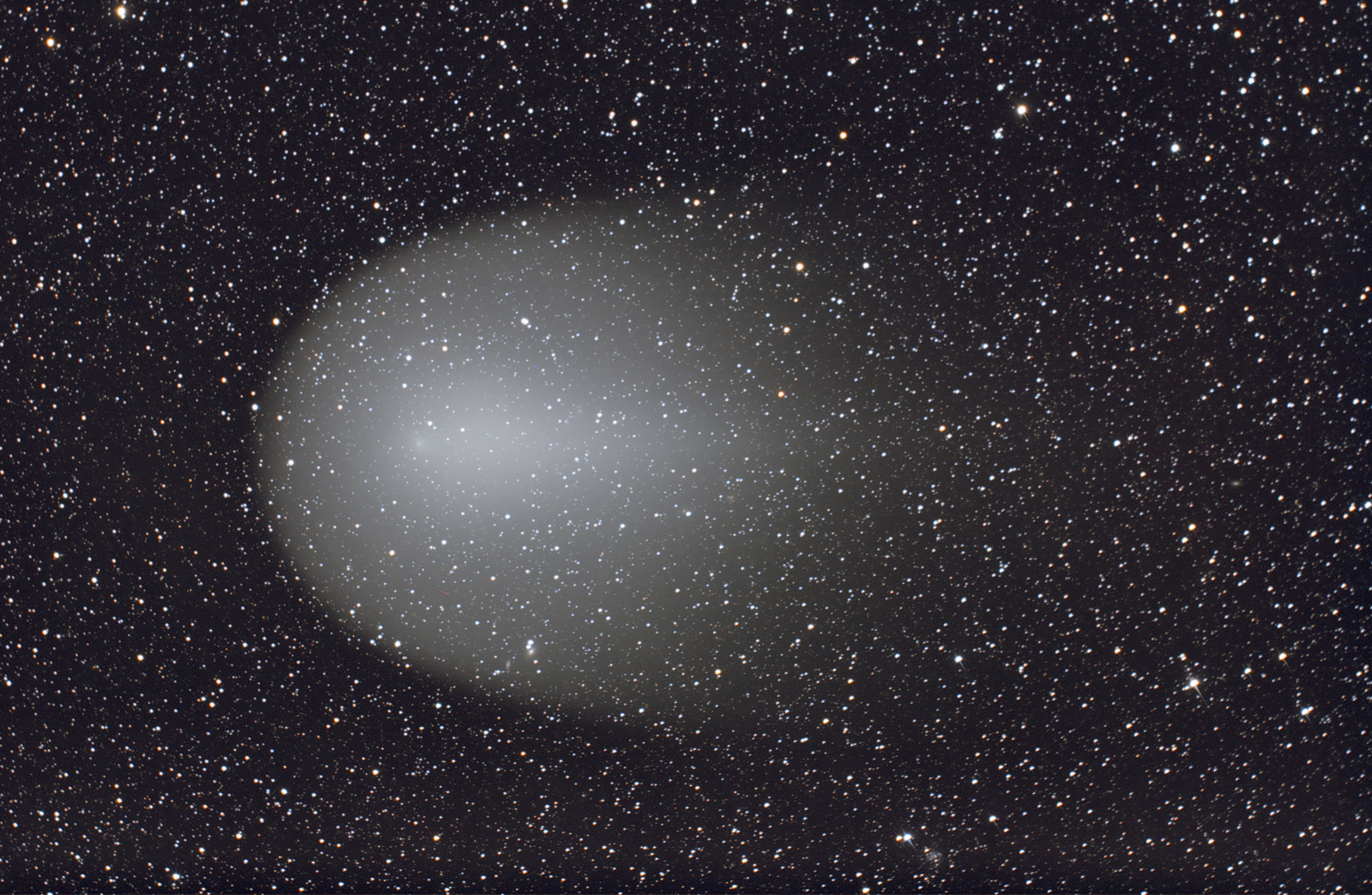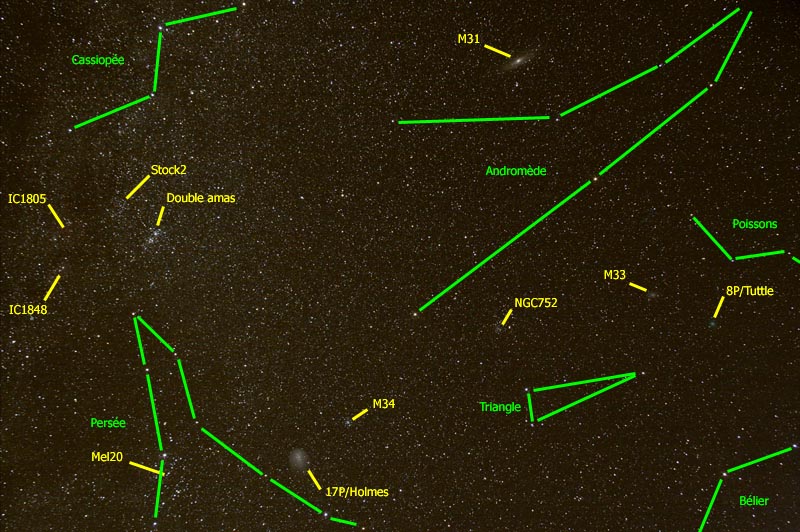Para alguns o cometa já deu o que tinha a dar; não será bem assim pois ele só passa para o hemisfério sul em meados de 2009 e como continua a crescer deixo aqui algumas valores medidos por astrónomos:
7/P Holmes coma Diameter = roughly 3.9 million km
17/P Holmes coma Surface Area = 47.78 million square km
17/P Holmes coma Volume = 31.06 million cube km
VOLUME OF 31.06 MILLION!!!
Heres a reference, the Sun.
Suns equatorial diameter = 1.39 million km
Suns Surface Area = 6.07 million square km
Suns Volume = 1.406 million cube km
So that means comet 17P is actually 22x's larger then the Sun when we consider its volume. Which I believe would be the most accurate form of relationship in 3d measurements.
17P - 31.06
Sun - 1.40
IT IS 22x's the size of the sun. People say its 3x's bigger then the sun but thats only the diameter measured cross, a 2 dimensional relationship. If you calculate the volume of both the Sun and Holmes Coma using thier diameters given you will get holmes coma 22.09 times larger, in volume that is. However, I'm not declaring Holmes is denser then the sun, the sun still holds its crown as the heaviest object in the solar system so no, the sun isn't going to change its galactic orbit over this. But, it IS 22 times larger in scope. No, this comet doesn't have a tail, the coma is still egg shaped so these calculations hold a good value for sheer size if it were placed next to the sun.
What I feel might, might happen....Comet holmes goes through another outburst in late Dec, early Jan 08. If this happens, I wonder if the current coma would glow bright in the sky. Knowing the coma is larger then the moon from naked eye observations means it would be a fantastic light show in the night sky.
Já agora Rog, a magnitude mantém-se 3.0 e continua visível no céu (equivalendo a Sirius em brilho).
Por estas e por outras, este é um cometa "sui generis" de que ninguém fala na imprensa. Não seria conveniente, por razões óbvias...
E neste
link podem ver-se o
Holmes e o
Tuttle :
